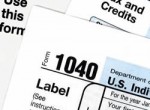 A 1031 Tax Exchange allows you to defer taxes on the sale of a property. It will allow you to have more money to invest in another real estate transaction. You are actually using the money from the sale toward a purchase instead of paying it to the government in taxes. This relates to a tax free loan in the amount you would normally be paying in taxes. The 1031 permits deferrals of federal capital gains (15%), depreciation recapture (25%) and state taxes (generally 8%-9%) where applicable. The 1031 Tax Exchange allows you to defer these taxes until you later sell the Replacement Property or until you pass away. Heirs who inherit the property have a new stepped up basis for establishing the value and will not experience the capital gains until years to come.
A 1031 Tax Exchange allows you to defer taxes on the sale of a property. It will allow you to have more money to invest in another real estate transaction. You are actually using the money from the sale toward a purchase instead of paying it to the government in taxes. This relates to a tax free loan in the amount you would normally be paying in taxes. The 1031 permits deferrals of federal capital gains (15%), depreciation recapture (25%) and state taxes (generally 8%-9%) where applicable. The 1031 Tax Exchange allows you to defer these taxes until you later sell the Replacement Property or until you pass away. Heirs who inherit the property have a new stepped up basis for establishing the value and will not experience the capital gains until years to come.
There are several types of exchanges. They include: Personal Property Exchange, Concurrent, Construction, and Reverse Exchanges.
The Personal Property Exchange is the most common type of exchange. It occurs when a property is sold and another property is purchased within 180 days following the sale of the Relinquished Property. For safe harbor, the sale proceeds must be held by a Qualified Intermediary between the sale of the Relinquished Property and the purchase of the new Replacement Property.
A Concurrent or Simultaneous Exchange occurs when two properties are exchanged simultaneously. Two properties can be swapped, property for property (two party exchange), or a property is sold and the replacement property purchased simultaneously. A Qualified Intermediary should facilitate the exchange.
A Construction Exchange, or build to suit exchange, occurs when the funds from the sale of a property are used to construct improvements on the Replacement Property. The property in which the improvements are being constructed for the taxpayer must be held by a third party (Exchange Accommodation Titleholder) until the improvements are complete or until the end of the 180 day Exchange Period. The taxpayer is then deeded the Replacement property with the improvements. This transaction is more complex and incurs higher fees.
During a Reverse Exchange, the Replacement Property is purchased prior to the sale of the Relinquished Property. The Replacement property must also be held by an Exchange Accommodation Titleholder until the sale is finalized which must be within 180 days following the purchase of the Replacement Property. This is also a more complex transaction incurring higher fees.
Everyone’s financial situation is different. In some cases, a tax deferred exchange may not benefit the seller. You and your tax advisor should do a calculation to measure the benefits. There are guidelines, timelines and certain documents that must be completed for a 1031 Exchange to be accepted by the IRS. Your tax advisor, attorney and Realtor will be able to help you with these procedures.
Patty Burns, CCIM
Commercial Real Estate Agent
Macon Commercial Office
478-746-9421
Trip Wilhoit, CCIM
Commercial Real Estate Agent
Macon Commercial Office
478-746-9421
photo credit: IRS EIN


